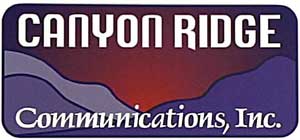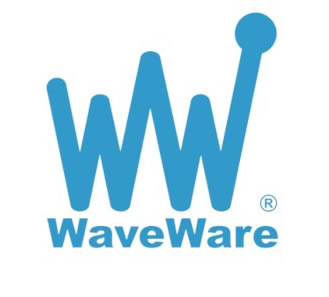|
Selected portions of the
BloostonLaw Telecom Update,
and/or the
BloostonLaw Private Users Update
— newsletters from the Law Offices of
Blooston, Mordkofsky, Dickens, Duffy & Prendergast, LLP
— are reproduced in this section with the firm’s permission.
|
BloostonLaw Telecom Update
|
Vol. 18, No. 28
|
July 8, 2015
|
Comment Deadline Established for Net Neutrality Transparency Exemption Proceeding
The FCC has announced August 5 as the comment deadline for its Public Notice on whether the current small-entity exemption for the enhanced transparency rules should be made permanent. Under the exemption, providers with 100,000 or less broadband connections (aggregated across affiliates) do not need to comply with the enhanced transparency requirements adopted in the FCC’s 2015 Open Internet Order.
BloostonLaw is preparing comments and will circulate a draft in coming weeks. Interested providers should contact the firm without delay.
Headlines
FCC Announces Advisory Opinion Procedures for Open Internet
The FCC issued a Public Notice on July 2, 2015, providing information on the Open Internet advisory opinion procedures and the process for submitting a request for an opinion. This process was adopted in the Open Internet Order and allows companies to get advice from the FCC about the legality of new practices that companies may be considering. According to the procedures, any entity subject to the FCC's jurisdiction can request an advisory opinion from the FCC Enforcement Bureau regarding its own prospective or proposed activity or business practice that may implicate the existing Open Internet rules or any rules or policies related to the Open Internet that may be adopted in the future. Requests for advisory opinions must relate to prospective or proposed conduct that is sufficiently concrete and detailed to enable the Bureau to conduct an in-depth evaluation of the proposal and they must be accompanied by all material information needed for the Bureau to make a determination regarding whether the proposed conduct would comply with the Open Internet rules. The Bureau will not respond to requests for opinions that relate to ongoing or prior conduct or to conduct that is the subject of a current government investigation or proceeding.
The FCC states that although advisory opinions are not binding on any party, “a requesting party may rely on an opinion if the request fully and accurately contains all the material facts and representations necessary for the opinion and the situation conforms to the situation described in the request for opinion.” According to the FCC, this means that “if the Bureau states in an opinion that it does not presently intend to take enforcement action with respect to proposed conduct, it will not take enforcement action with respect to that conduct if these conditions are met.” Further, the FCC states that “the Bureau or FCC may later rescind an advisory opinion, but any such rescission would apply only to future conduct and would not be retroactive.”
FCC Seeks Comment on Video Programming Competition
On July 2, the FCC’s Media Bureau issued a Public Notice seeking “data, information and comment” on the state of competition in the delivery of video programming for its upcoming Seventeenth Report. Specifically, the Bureau seeks to update the information and metrics provided in the previous report, and to report on the state of competition in the video marketplace in 2014. Comments are due August 21; replies due September 21.
The report will use the same format as the previous, in which entities that deliver video programming are categorized in one of three groups — multichannel video programming distribution (MVPD), broadcast television stations, or online video distribution (OVD). Within each category, the FCC seeks information on business models, competitive strategies, selected operating and financial statistics, regulatory and market conditions affecting competition, and ability to acquire content, among others. The FCC is also seeking information on the major developments in CPE devices that affect competition in the marketplace for the delivery of video programming and trends in consumer behavior and their impact on the products and services entities offer in the marketplace for the delivery of video programming.
Law & Regulation
House Subcommittee Holds Hearing on Internet Governance
Earlier this morning, the House Subcommittee on Communications and Technology held a hearing
Internet Governance Progress After ICANN 53,
in which it heard testimony from NTIA Administrator Larry Strickling and Internet Corporation for Assigned Names and Numbers (ICANN) CEO Fadi Chehade on the status of the Internet Assigned Numbers Authority (IANA) stewardship transition efforts following the recently concluded ICANN meeting.
Last year, the NTIA announced its intention to transition the IANA functions, which include the global coordination of the DNS Root, IP addressing, and other Internet protocol resources, to the global multistakeholder community by the end if its contract (September 2015). At ICANN 53, the multistakeholder community met in multiple sessions to discuss options for improving ICANN accountability. Among the concerns raised with the proposals are:
-
How to ensure that stakeholder groups – supporting organizations (SOs) and advisory committees (ACs) in ICANN parlance – would have standing under California law to enforce the changes to the bylaws;
-
How to incorporate the Government Advisory Committee (GAC) into the new ICANN structure without increasing its power relative to the other SOs and ACs; and,
-
How to resolve outstanding questions regarding the potential for lawsuits that could impact the SOs and ACs.
The Subcommittee indicated the House recently approved bipartisan legislation to ensure Congressional oversight over any proposed transition, and companion legislation was also approved by the Senate Committee on Commerce, Science, and Transportation.
The hearing can be viewed in full here.
FCC Adopts Interstate TRS Compensation Rates, Contribution Factor
Last week, the FCC’s Consumer and Governmental Affairs Bureau adopted the following per-minute compensation rates, to be paid from the Interstate Telecommunications Relay Services Fund for the Fund Year beginning July 1: interstate traditional TRS, $2.2904; interstate Speech-to-Speech relay service, $3.4214; interstate captioned telephone service and IP captioned telephone service, $1.8895; and IP Relay, $1.37. The Bureau also adopted a $1.048 billion funding requirement and a carrier contribution factor of 0.01635.
D.C. Court Authorizes Telco, Wireless and Cable Industry Intervenors, Adopts Scheduling Order in Open Internet Order Review
On June 29, the D.C. Court of Appeals issued an Order granting the motions to intervene filing by USTelecom, WISPA, NCTA, ACA, CTIA, AT&T and CenturyLink in the case considering Petitions for Review of the FCC’s Open Internet Order. The court also granted the motion to intervene filed by TechFreedom, et al., to the extent it seeks intervention in support of the USTelecom, et al. petition, and referred to the merits panel to the extent it seeks intervention in support of the FCC in the petition filed by Full Service Network,
et al.
The Order also contained the briefing schedule:
-
Joint opening briefs for the Petitioners are due July 30.
-
Joint opening brief for the Intervenors in support of the Petitioners is due August 6.
-
Opening brief of the Respondent is due September 14.
-
Joint brief of Intervenors in support of the Respondent are due September 21.
-
All reply briefs are due October 5.
-
Final briefs are due October 13.
Industry
Time Warner Cable Owes $229,500 for 153 Automated Calls Placed After Revocation of Consent
Yesterday, the United States District Court for the Southern District of New York granted summary judgment against Time Warner Cable for violations of the Telephone Consumer Protection Act of 1991 (the “TCPA”), which prohibits the placement of calls by an automated dialing machine without prior consent of the called party. The plaintiff, Ms. Araceli King, was awarded $229,500 — 153 violations at $1,500 per violation.
Time Warner argued that its system did not qualify as an automated dialer because it did not generate numbers, but rather compiled them from Time Warner’s customer base (specifically, customers who were behind on their bills). The court found, however, that since a human did not compile the list, and in fact no human involvement was identified at any stage in the process, the system is fully automated from start to finish and is therefore an automated dialer. “Whether it actually dialed King’s number randomly or from a list is irrelevant.”
Time Warner also argued that only calls that actually connected — in this case, around 70 — could possibly violate the TCPA. Here, the court ruled that the plain language of the statute makes it unlawful to make any call using an automated dialing system – whether the call is answered by a person, a machine, or not at all is irrelevant.
Finally, Time Warner argued that it placed the calls with the consent of the consumer. Specifically, Time Warner argued a) that the plaintiff had consented through her agreement with the company and b) it
thought
it was calling a Mr. Luiz Perez, whose consent it had also obtained. However, after a few months of calls, the plaintiff informed a Time Warner representative that she was not Mr. Perez, and asked the company to stop calling her. The court found that this constituted revocation of consent, and that all calls placed after the revocation (153) were violations of the TCPA.
The court found that treble damages were appropriate in this case because Time Warner Cable had full knowledge through its agent that the plaintiff had revoked consent. Plaintiff’s phone records corroborated her claim that she spoke to a representative, and Time Warner Cable was not able to refute it. Further, the court found that Time Warner Cable’s assertion that it lacked knowledge of non-consent “incredible” in light of the fact that the calls continued after it had been served with the instant suit. “Defendant harassed Plaintiff with robo-calls until she had to resort to a lawsuit to make the calls stop, and even then TWC could not be bothered to update the information in its IVR system. The calls placed after March 26, 2014 are particularly egregious violations of the TCPA and indicate that TWC simply did not take this lawsuit seriously. Treble damages are unquestionably appropriate to reflect the seriousness of TWC's willful violations.”
Deadlines
JULY 31: FCC FORM 507, UNIVERSAL SERVICE QUARTERLY LINE COUNT UPDATE.
Line count updates are required to recalculate a carrier's per line universal service support, and is filed with the Universal Service Administrative Company (USAC). This information must be submitted on July 31 each year by all rate-of-return incumbent carriers, and on a quarterly basis if a competitive eligible telecommunications carrier (CETC) has initiated service in the rate-of-return incumbent carrier’s service area and reported line count data to USAC in the rate-of-return incumbent carrier’s service area, in order for the incumbent carrier to be eligible to receive Interstate Common Line Support (ICLS). This quarterly filing is due July 31 and covers lines served as of December 31, 2014. Incumbent carriers filing on a quarterly basis must also file on September 30 (for lines served as of March 31, 2015); December 30 (for lines served as of June 30, 2015), and March 31, 2016, for lines served as of September 30, 2015).
JULY 31: CARRIER IDENTIFICATION CODE (CIC) REPORTS.
Carrier Identification Code (CIC) Reports must be filed by the last business day of July (this year, July 31). These reports are required of all carriers who have been assigned a CIC code by NANPA. Failure to file could result in an effort by NANPA to reclaim it, although according to the Guidelines this process is initiated with a letter from NANPA regarding the apparent non-use of the CIC code. The assignee can then respond with an explanation. (Guidelines Section 6.2). The CIC Reporting Requirement is included in the CIC Assignment Guidelines, produced by ATIS. According to section 1.4 of that document: At the direction of the NANPA, the access providers and the entities who are assigned CICs will be requested to provide access and usage information to the NANPA, on a semi-annual basis to ensure effective management of the CIC resource. (Holders of codes may respond to the request at their own election). Access provider and entity reports shall be submitted to NANPA no later than January 31 for the period ending December 31, and no later than July 31 for the period ending June 30. It is also referenced in the NANPA Technical Requirements Document, which states at 7.18.6: CIC holders shall provide a usage report to the NANPA per the industry CIC guidelines … The NAS shall be capable of accepting CIC usage reports per guideline requirements on January 31 for the period ending December 31 and no later than July 31 for the period ending June 30. These reports may also be mailed and accepted by the NANPA in paper form. Finally, according to the NANPA website, if no local exchange carrier reports access or usage for a given CIC, NANPA is obliged to reclaim it. The semi-annual utilization and access reporting mechanism is described at length in the guidelines.
AUGUST 1: FCC FORM 499-Q, TELECOMMUNICATIONS REPORTING WORKSHEET.
All telecommunications common carriers that expect to contribute more than $10,000 to federal Universal Service Fund (USF) support mechanisms must file this quarterly form. The FCC has modified this form in light of its recent decision to establish interim measures for USF contribution assessments. The form contains revenue information from the prior quarter plus projections for the next quarter. Form 499-Q relates only to USF contributions. It does
not
relate to the cost recovery mechanisms for the Telecommunications Relay Service (TRS) Fund, the North American Numbering Plan Administration (NANPA), and the shared costs of local number portability (LNP), which are covered in the annual form (Form 499-A) that was due April 1.
AUGUST 1: FCC FORM 502, NUMBER UTILIZATION AND FORECAST REPORT:
Any wireless or wireline carrier (including paging companies) that have received number blocks—including 100, 1,000, or 10,000 number blocks—from the North American Numbering Plan Administrator (NANPA), a Pooling Administrator, or from another carrier, must file Form 502 by August 1. Carriers porting numbers for the purpose of transferring an established customer’s service to another service provider must also report, but the carrier receiving numbers through porting does not. Resold services should also be treated like ported numbers, meaning the carrier transferring the resold service to another carrier is required to report those numbers but the carrier receiving such numbers should not report them. Reporting carriers file utilization and forecast reports semiannually on or before February 1 for the preceding six-month reporting period ending December 31, and on or before August 1 for the preceding six-month reporting period ending June 30.
AUGUST 29: COPYRIGHT STATEMENT OF ACCOUNTS.
The Copyright Statement of Accounts form plus royalty payment for the first half of calendar year 2015 is due to be filed August 29 at the Library of Congress’ Copyright Office by cable TV service providers.
SEPTEMBER 1: FCC FORM 477, LOCAL COMPETITION AND BROADBAND REPORTING FORM.
Three types of entities must file this form.
-
Facilities-based Providers of Broadband Connections to End User Locations:
Entities that are facilities-based providers of broadband connections — which are wired “lines” or wireless “channels” that enable the end user to receive information from and/or send information to the Internet at information transfer rates exceeding 200 kbps in at least one direction — must complete and file the applicable portions of this form for each state in which the entity provides one or more such connections to end user locations. For the purposes of Form 477, an entity is a “facilities-based” provider of broadband connections to end user locations if it owns the portion of the physical facility that terminates at the end user location, if it obtains unbundled network elements (UNEs), special access lines, or other leased facilities that terminate at the end user location and provisions/equips them as broadband, or if it provisions/equips a broadband wireless channel to the end user location over licensed or unlicensed spectrum. Such entities include incumbent and competitive local exchange carriers (LECs), cable system operators, fixed wireless service providers (including “wireless ISPs”), terrestrial and satellite mobile wireless service providers, MMDS providers, electric utilities, municipalities, and other entities. (Such entities do not include equipment suppliers unless the equipment supplier uses the equipment to provision a broadband connection that it offers to the public for sale. Such entities also do not include providers of fixed wireless services (
e.g.,
“Wi-Fi” and other wireless ethernet, or wireless local area network, applications) that only enable local distribution and sharing of a premises broadband facility.)
-
Providers of Wired or Fixed Wireless Local Telephone Services:
Incumbent and competitive LECs must complete and file the applicable portions of the form for each state in which they provide local exchange service to one or more end user customers (which may include “dial-up” ISPs).
-
Providers of Interconnected Voice over Internet Protocol (VoIP) Service:
Interconnected VoIP service is a service that enables real-time, two-way voice communications; requires a broadband connection from the user’s location; requires Internet-protocol compatible customer premises equipment; and permits users generally to receive calls that originate on the public switched telephone network and to terminate calls to the public switched telephone network. Interconnected VoIP providers must complete and file the applicable portions of the form for each state in which they provide interconnected VoIP service to one or more subscribers, with the state determined for reporting purposes by the location of the subscriber’s broadband connection or the subscriber’s “Registered Location” as of the data-collection date. “Registered Location” is the most recent information obtained by an interconnected VoIP service provider that identifies the physical location of an end user.
-
Providers of Mobile Telephony Services:
Facilities-based providers of mobile telephony services must complete and file the applicable portions of this form for each state in which they serve one or more mobile telephony subscribers. A blic switched network using an in-network switching facility that enables the provider to reuse frequencies and accomplish seamless handoff of subscriber calls. A mobile telephony service provider is considered “facilities-based” if it serves a subscriber using spectrum for which the entity holds a license that it manages, or for which it has obtained the right to use via lease or other arrangement with a Band Manager.
SEPTEMBER 30: FCC FORM 396-C, MVPD EEO PROGRAM REPORTING FORM.
Each year on September 30, multi-channel video program distributors (“MVPDs”) must file with the Commission an FCC Form 396-C, Multi-Channel Video Programming Distributor EEO Program Annual Report, for employment units with six or more full-time employees. Users must access the FCC’s electronic filing system via the Internet in order to submit the form; it will not be accepted if filed on paper unless accompanied by an appropriate request for waiver of the electronic filing requirement. Certain MVPDs also will be required to complete portions of the Supplemental Investigation Sheet (“SIS”) located at the end of the Form. These MVPDs are specifically identified in a Public Notice each year by the FCC.
Calendar At A Glance
July
Jul. 9 – Deadline to Certify Accuracy of Authorization and Database Technical Information for Full Power and Class A Stations.
Jul. 9 – Deadline for Petitions for Eligible Entity Status for Full Power and Class A Stations.
Jul. 14 – Reply comments are due on the FCC’s Mobile Competition Report.
Jul. 16 – Comments are due on Part 4 Outage Reporting NPRM.
Jul. 20 – PRA comments are due on the Open Internet Order.
Jul. 27 – Comments are due on FirstNet Draft RFP.
Jul. 31 – Reply comments are due on Part 4 Outage Reporting NPRM.
Jul. 31 – FCC Form 507 (Universal Service Quarterly Line Count Update) is due.
Jul. 31 – Carrier Identification Code (CIC) Report is due.
August
Aug. 1 – FCC Form 502 due (North American Numbering Plan Utilization and Forecast Report).
Aug. 1 – FCC Form 499-Q (Quarterly Telecommunications Reporting Worksheet) is due.
Aug. 5 – Comments are due on Transparency Exemption proceeding.
Aug. 21 – Comments due on Video Programming Competition Report.
Aug. 29 – Copyright Statement of Accounts is due.
September
Sep. 1 – FCC Form 477 due (Local Competition and Broadband Report).
Sep. 4 – Reply comments are due on Transparency Exemption proceeding.
Sep. 21 – Reply comments are due on Video Programming Competition report.
Sep. 25 – Comments are due on Section IV.B of the Special Access Data NPRM.
Sep. 30 – FCC Form 396-C (MVPD EEO Program Annual Report).
|





















































 David George and Bill Noyes
David George and Bill Noyes






















